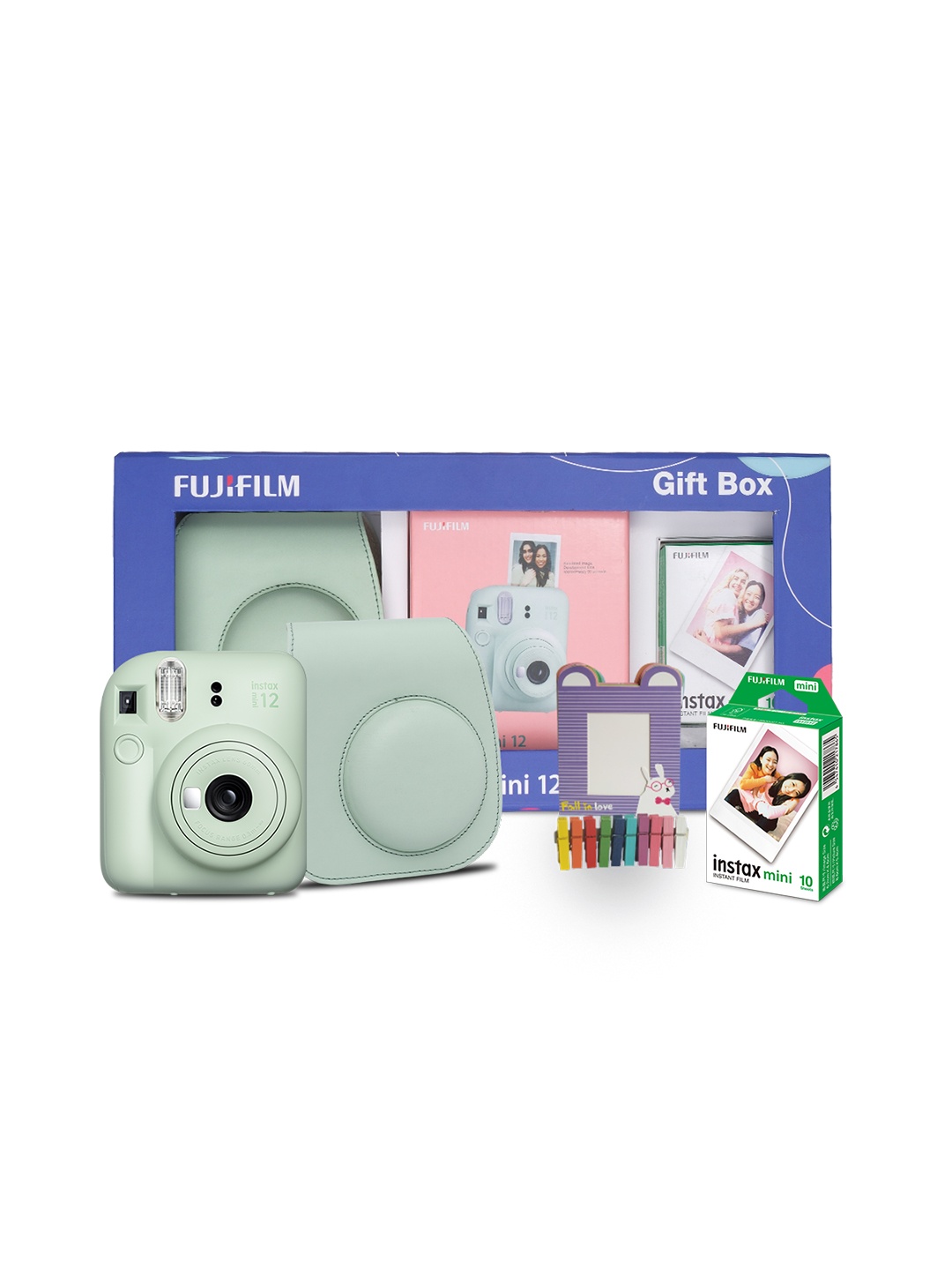Think Ice Builds Up In A Fridge For No Reason? You Might Be Making These Common Mistakes

The sweltering season often drives everyone to seek refuge in icy drinks, chilled desserts, and anything that promises relief from the relentless heat. But in the background, your fridge may be quietly working overtime and not always efficiently. If you're noticing mysterious ice buildup, strange sounds or that your veggies seem less crisp than usual, it's time to dig a little deeper.
While a refrigerator seems like a set-it-and-forget-it appliance, summer introduces a set of unique challenges. From power cuts and overstuffed shelves to that constant door-opening for mango slices, the list goes on. These habits, while seemingly harmless, can strain your fridge, lead to frost accumulation, or worse, reduce its lifespan.
So if your freezer's suddenly looking like Antarctica while the rest of the fridge is struggling to stay cool, it might be worth checking if you're making one of these common summer blunders. And, if you are looking for a new one, just check out these fridges on Flipkart from Godrej, Whirlpool, LG, Haier to Samsung.
Also Read: Is Your Refrigerator Dying? 8 Clear Signs It Is Time For A New One
Overloading the Fridge After a Grocery Haul
It's tempting, stocking up for the week in one go, especially with fresh produce, curd, soft drinks, and all the mangoes you can lay your hands on. But overloading the fridge compromises airflow, particularly in older or budget-friendly models. Without enough circulation, cool air can't distribute evenly, making some areas freeze while others warm up.
This uneven cooling forces the compressor to work harder, eventually leading to frost buildup, especially near the vents. And let's be honest, digging through a jam-packed fridge to find the chutney bottle hiding behind a watermelon isn't fun.
A smarter move? Keep the fridge about three-quarters full. It ensures good airflow while retaining coolness better than an empty one. Plus, a decluttered fridge means fewer forgotten leftovers lurking in the back.
Leaving the Door Open Too Often Or Too Long
Nothing tests patience like waiting for someone to choose between cola and cold brew while standing with the fridge door wide open. During summer, this habit is even more damaging. The hot air from outside rushes in, causing condensation, which later freezes, leading to that dreaded ice buildup.
Refrigerators aren't designed for tropical air to do a dance inside them. Every time the door stays open longer than necessary, the appliance goes into overdrive to restore its ideal temperature. That's like running a marathon after a heavy biryani meal, not sustainable.
Try organising your fridge so you know exactly where everything is. Better yet, practise the age-old habit: think before opening. It saves energy, protects your fridge, and gives the electricity bill a break.
Storing Hot Food Without Cooling It First
That steaming bowl of leftover rajma might seem harmless when placed directly into the fridge, but it's not. Putting hot food straight into the fridge raises the internal temperature, encouraging condensation, which can turn into frost over time. This also forces the cooling system to strain more than it needs to.
Letting food cool on the counter first (but not for too long, to avoid bacterial growth) is a small step with big benefits. A lukewarm sabzi cools quickly without giving your fridge a panic attack.
Another quick tip: use shallow containers. They help food cool faster and more evenly. Plus, they're easier to stack and identify. No more mystery tiffins of doom hiding behind the dahi.
Ignoring the Defrost Function
Manual defrost refrigerators often come with a button that most people ignore until a mini ice age forms inside. If your fridge isn't frost-free, defrosting it regularly, at least once every two weeks in summer, keeps the cooling system efficient and your food safe.
Ice buildup around the coils and vents can block cold air from circulating properly. Not only does this spoil food faster, but it also risks damaging the fridge's internal components.
A regular defrost is like a reset button. It helps clear out ice, prevent overcooling in some sections, and gives the fridge a much-needed breather. Just remember to plan it when your perishables are at their lowest.
Setting The Temperature Too Low
Cranking the dial to the coldest setting might feel like a good idea in peak summer, but more isn't always better. Extremely low temperatures don't just freeze your lettuce into a green popsicle; they create unnecessary frost buildup, especially if your fridge is not designed to auto-balance humidity.
Most fridges work best between 3°C to 5°C for the refrigerator and around -18°C for the freezer. Anything lower and you're just asking for more ice than you need, without actually keeping things fresher.
Invest in a small fridge thermometer if your appliance doesn't show readings digitally. It's a tiny purchase around ₹250 that helps you avoid both frozen milk and melty kulfi disasters.
Not Cleaning The Gasket And Vents
The humble rubber seal around your fridge door, the gasket, often goes unnoticed. But when it gathers dust, crumbs, or hardens over time, it fails to close properly. This allows warm air to sneak in, which can cause ice to form, especially near the back of the fridge.
Similarly, clogged air vents restrict airflow, leading to uneven cooling and condensation. Over time, this moisture can freeze into stubborn layers of ice.
Cleaning the gasket and vents once a month with warm, soapy water is a simple task that goes a long way. If the gasket has cracks or doesn't hold a piece of paper firmly when shut, it's time to replace it. A loose seal is like leaving the fridge door half-open without realising it.
Using Inappropriate Containers Or Wrappings
Ever noticed how some containers sweat inside the fridge, while others don't? It's all about the material and sealing. Uncovered or loosely wrapped food adds moisture to the air, increasing humidity and leading to frost formation. That plastic dabba from takeout? Not the best choice unless it has an airtight lid.
Glass containers with tight seals are your fridge's best friends. They reduce moisture transfer, prevent smells from spreading, and help maintain temperature stability. They're also more eco-friendly, a win for the planet and your paratha.
Covering food properly also reduces the chance of spills, which can freeze, block vents, or just create a sticky mess you'll ignore until it becomes a science experiment.
Ignoring Voltage Fluctuations And Power Cuts
In many places, summer still brings the occasional voltage dip or sudden power cut. These fluctuations mess with your fridge's compressor and can affect its ability to regulate temperature. Result? Sudden icing, spoiled food, and long-term damage to internal components.
A good stabiliser, specifically made for refrigerators (available from around ₹1,500), protects your appliance from unpredictable electricity swings. Even better, choose a fridge with built-in voltage protection. It's a wise investment that saves your budget in the long run.
If there's a power cut, avoid opening the fridge unless necessary. Cold air escapes fast, and it takes time to get back to optimal cooling levels once the power returns.
Godrej, Whirlpool, LG, Haier To Samsung, Top Products On Flipkart Related To This Article
1. CANDY 175 L Direct Cool Single Door 2 Star Refrigerator with Toughened glass Shelves, Stabilizer Free Operation
2. Godrej 183 L Direct Cool Single Door 3 Star Refrigerator with Jumbo Vegetable Tray and Toughened Glass Shelves
3. Whirlpool 184 L Direct Cool Single Door 2 Star Refrigerator
4. LG 185 L Direct Cool Single Door 4 Star Refrigerator with Base Drawer with Smart Inverter Compressor & Smart Connect
5. Haier 190 L Direct Cool Single Door 5 Star Refrigerator with Base Drawer with , Large Storage Space1 Hour Icing Technology
6. LG 185 L Direct Cool Single Door 4 Star Refrigerator with Smart Inverter Compressor
7. SAMSUNG 183 L Direct Cool Single Door 5 Star Refrigerator with Base Drawer with Digital Inverter
8. SAMSUNG 215 L Direct Cool Single Door 5 Star Refrigerator with Digital Inverter
9. SAMSUNG 236 L Frost Free Double Door 3 Star Convertible Refrigerator with Digital Inverter and Display
10. Midea 510 L Frost Free Side by Side Refrigerator
A fridge isn't just a cold box; it's a silent warrior, working around the clock to keep things fresh in the face of scorching heat, midnight snack raids, and last-minute dinner plans. But like any trusty sidekick, it needs a bit of care, especially in the unforgiving months of summer.
From giving it space to breathe and time to rest, to treating it with thoughtful habits, small actions can make a big difference. Avoiding these common mistakes not only extends the life of your fridge but also keeps your food fresher, your electricity bills lower, and your kitchen frustrations to a minimum.
So next time you wonder why ice is building up out of nowhere, give your fridge a second glance; it might just be reacting to a few avoidable summer slip-ups.
Disclaimer: The images used in this article are for illustration purpose only. They may not be an exact representation of the products, categories and brands listed in this article.






























